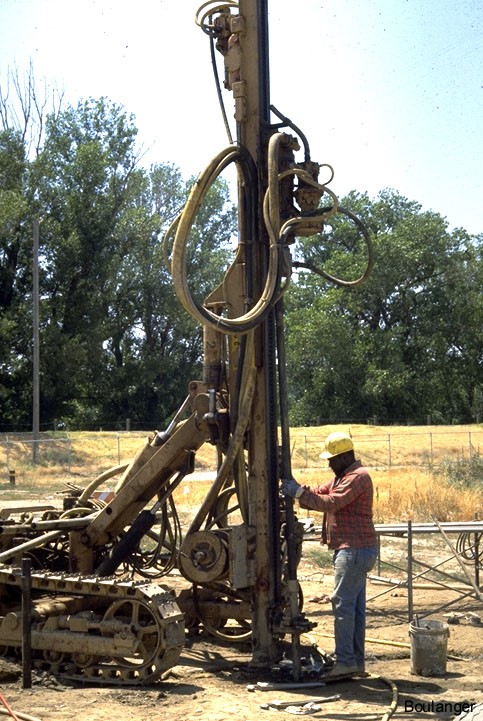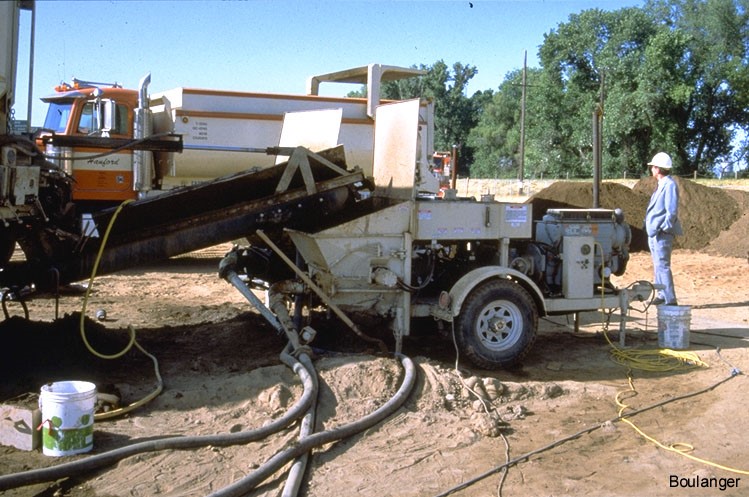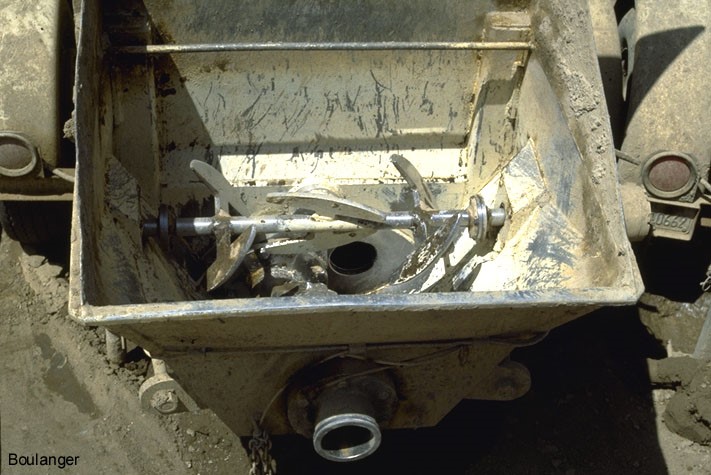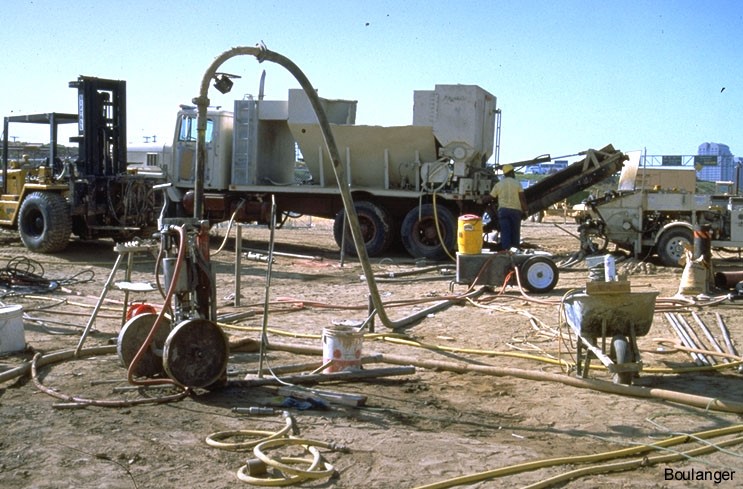




<p><p><figure id='attachment_2641' style='max-width:924px' class='caption alignnone'><img class="wp-image-2641 size-full" src="https://www.geoinstitute.org/sites/default/files/geotech-tools-uploads/…; alt="Cartoons showing the sequence of compaction grouting under a footing." width="924" height="301" /><figcaption class='caption-text'> Compaction Grouting Photograph courtesy of Hayward Baker</figcaption></figure></p><p>A low mobility (slump) grout is pumped into soils with high pressure to displace and densify the surrounding soils. The treated soil is strengthened and compacted. Advantages include installation beneath existing structures, use in low head clearance areas, and well proven in practice. This technique is applicable to new embankment construction, embankment widening and stabilization of working platforms.</p><p>
